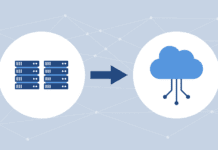In an effort to shore up its data archiving and compliance offerings, IBM today agreed to buy Princeton Softech for an undisclosed sum.
Princeton Softech’s Optim software helps improve database performance by assessing, classifying and socking away historical data culled from disparate application and database environments.
Optim is also used to create test databases where sensitive data can be protected, which in the end helps customers better protect their privacy. Princeton promises that customers won’t have to use expensive storage for older, seldom accessed records.
The deal for Princeton Softech, which has approximately 240 employees and more than 2,200 customers, is expected to close later this year.
IBM said in a statement it will fold Princeton Softech’s products into its Information Management Software division, led by Ambuj Goyal, general manager of IBM Information Management.
Noting that companies all over the world are challenged with corralling growing volumes of data, Goyal said in a statement that the addition of Princeton Softech’s assets will “provide our customers and partners with a single solution to more effectively manage risk and keep up with the variety of regulatory and enterprise data governance requirements.”
To be sure, record retention rules such as Sarbanes-Oxley, HIPAA and SEC 17a-4 have businesses scared into by-the-book rigidity when it comes to saving records and other data for certain time periods.
Such rules were created to quash document-shredding scandals such as the Enron and Arthur Andersen fiasco, where incriminating records were destroyed.
In the last five or six years, customers have been turning to their storage vendors, such as IBM, EMC or HP, for help in preserving crucial digital records, such as e-mails, spreadsheets and PDFs, as well as application and database data.
IBM’s latest buy should firm up an information management software segment that grew 21 percent in the second quarter for Big Blue, thanks in part to the momentum spurred by its DB2 9 Viper database.
But as IBM’s first pure archiving purchase amid a raft of software management acquisitions, it’s also a defensive maneuver before all of the archiving vendors get snapped up.
Since EMC picked up archiving power Legato Systems in 2003 for $1.3 billion, the floodgates have opened. Veritas snatched KVS for $225 million in 2004.
CA purchased e-mail archiving vendor iLumin in 2005. HP acquired Princeton Softech rival OuterBay Technologies in February 2006.
Just last month, search engine giant Autonomy acquired e-mail archiving vendor Zantaz for $375 million, and Google followed by snapping up Postini.
There is monetary merit to archiving purchases, particularly thanks to the e-mail glut: IDC said the worldwide market for e-mail archiving applications grew 45 percent in 2006, thanks to the desire to meet compliance, legal discovery and storage optimization requirements.
IDC expects the market to approach $1.4 billion in 2011, sporting a five-year compound annual growth rate (CAGR) of 23.4 percent.
Article courtesy of InternetNews.com





